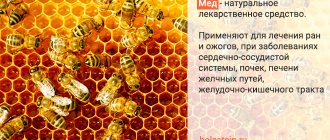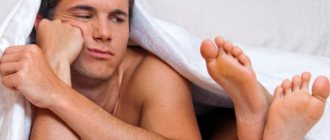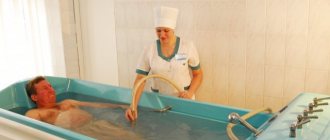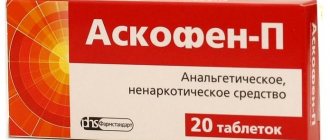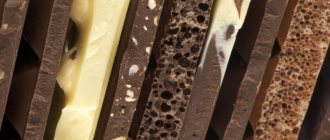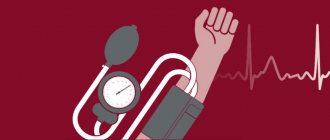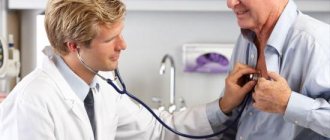Drugs that help reduce bilirubin in adults include hepatoprotectors (Heptral, Essentiale), stimulants for the formation and excretion of bile (Ursohol, Gepabene), droppers with solutions, enzymes (Mezim, Festal) that improve intestinal digestion (Dufalac, Laktofiltrum). Correct treatment cannot be prescribed without determining the cause - destruction of red blood cells, liver damage or an obstruction to the outflow of bile.
In the first case, hormones and exchange blood transfusion are needed; in case of hepatitis, it is important to eliminate the damaging factor (viruses, alcohol, toxic drugs). If the bile ducts are blocked by a stone or tumor, surgery is needed, and if bile stagnates, herbs (calendula, milk thistle) and dietary supplements (Hepatrin, Ovesol) can be used. A diet excluding alcohol and fatty, spicy foods is required; all methods of therapy are prescribed by a doctor.
How to reduce bilirubin in an adult by finding out the reason for its increase
An increase in bilirubin in the blood of an adult is associated with three groups of completely different diseases, so it can be reduced only by knowing the reason:
- destruction of red blood cells (hemolysis) in hereditary diseases (for example, spherocytosis, thalassemia), infections, poisoning, hemorrhage, myocardial infarction, leukemia, radiation sickness;
- insufficient liver function due to viral hepatitis, cirrhosis, heart failure, alcohol abuse, medications, as well as due to impaired immunity or intrahepatic stagnation of bile in the ducts, congenital defects of liver enzymes (Gilbert, Crigler-Najjar syndrome);
- an obstruction to the outflow of bile from the common bile duct (after exiting the liver) due to blockage with a stone, inflammation, tumor, or compression by the pancreas.
There are about 70 known diagnoses that cause an increase in bilirubin in the blood, so without examination it will not be possible to reduce it. The process of formation of bile pigment occurs constantly, and if excretion from the body is impaired, it will remain high. For examination the following is prescribed:
- general and biochemical blood test with liver enzymes, samples, cholesterol and glucose levels;
- Ultrasound of the liver and ducts, spleen, pancreas;
- if necessary, tomography and liver biopsy.
Consultations with a hematologist, oncologist, or surgeon are also necessary if signs of blood diseases, a tumor process, or a stone in the bile duct are detected. They may prescribe additional diagnostic methods. For hereditary diseases, a visit to a medical geneticist is required.
We recommend reading about bilirubin levels in jaundice. From the article you will learn about the metabolism of bilirubin in the body, the exchange of bilirubin in hemolytic, parenchymal and obstructive jaundice, changes in the body and in tests. And here is more information about how bilirubin changes during hepatitis.
How to reduce bilirubin in the blood in adults using folk remedies
It is possible to reduce bilirubin in the blood using folk remedies in adults only with intrahepatic stagnation of bile and provided that there is an outflow of bile. It is strictly forbidden to use these methods when the duct is blocked by a stone or the bile duct is obstructed, as this provokes the destruction of liver cells.
Most often, choleretic drugs are prescribed for Gilbert's syndrome (congenital deficiency of liver enzymes) and for dyskinesia (impaired movement of bile) of the biliary tract. Several groups of plants are used:
- to protect the liver (with hepatoprotective properties) – milk thistle seeds, chicory or dandelion roots, clover, calendula, immortelle flowers;
- to stimulate the movement of bile (cholekinetics) - mint leaves, birch leaves, tansy flowers, corn silk, barberry fruits;
- reducing the thickness of bile (choleretics) - mint leaves, birch leaves, immortelle flowers, wormwood grass, calamus and rose hip roots, dandelion;
- relieving spasms of the biliary tract - chamomile flowers, seeds of anise, fennel, dill, caraway, St. John's wort.
These herbs are combined for collections, using one or two plants from each group, depending on the predominant disorder of bile secretion:
- for dyskinesia of the hypotonic type (sluggish gallbladder), cholekinetics and hepatoprotectors are needed;
- if there is a tendency to spasms and severe pain (dyskinesia of the hypertensive type), antispasmodics and choleretics are used;
- with intrahepatic stagnation, choleretics and hepatoprotectors are needed.
For chronic inflammation of the biliary tract (without stones), plant collections are successfully used:
- immortelle flowers – 20 g,
- calendula flowers – 20 g,
- barberry fruits – 10 g,
- dandelion roots – 10 g,
- bedstraw grass – 20 g,
- mint leaves – 20 g,
- fennel fruits – 20 g.
To prepare, pour a tablespoon of crushed raw materials into 300 ml of hot water and keep in a water bath for half an hour, cool to room temperature and filter. Take the decoction warm, 100 ml 3 times a day, half an hour before meals for 2 months. Then you need a break for 15 days and the course is repeated.
Watch this video about traditional methods of treating bile stagnation:
Increased bilirubin levels in newborns
In infants, excess levels of the substance in the blood are common. The condition is called “newborn jaundice.” This condition is not life-threatening and is considered a physiological phenomenon. The reason is the reaction of destruction of hemoglobin during labor.
How can bilirubin be reduced in newborns?
When the deviation from the norm is insignificant, no measures are taken. Bilirubin quickly returns to normal without any help. If this does not happen, phototherapy is used - light treatment.
Phototherapy is a physiotherapeutic procedure that uses ultraviolet rays. The child lies under the lamps several times a day. In this case, bilirubin is converted into an isomer and removed from the body physiologically.
Breastfeeding plays an important role in reducing bilirubin. The more often the baby is put to the breast, the faster the yellow pigment returns to normal. The volume of fluid in newborns with jaundice is increased by 10-20%.
Drugs that reduce bilirubin in the blood in adults
The prescription of drugs that reduce blood bilirubin in an adult is carried out in accordance with the established cause - destruction of red blood cells (hemolysis), liver dysfunction (hepatitis, cirrhosis), blockage of the bile ducts (cholestasis).
For hemolysis
If the cause of the destruction of red blood cells is immune diseases, then Prednisolone and Methotrexate are used, they stop hemolysis and reduce bilirubin levels. For infection, antimicrobial agents are prescribed, but only after determining sensitivity and under the control of blood tests; most antibiotics are toxic to the liver.
To cleanse the blood of excess pigment
shown:
- droppers with solutions (saline, glucose, hemodez N);
- exchange blood transfusion;
- Phenobarbital 1-2 mg/kg body weight 1-2 times a day.
Taking folic acid and vitamin B12 helps increase the resistance of red blood cells to destruction.
For hepatitis and cirrhosis
To reduce bilirubin levels during inflammation and liver destruction, medications are recommended:
- protecting the liver - Hepa-Merz, Phosphogliv, Heptral, Essentiale, Hofitol;
- improving bile excretion - Ursofalk, Gepabene;
- bile pigment binders – Cholestyramine, Polysorb;
- improving intestinal digestion - Dufalak, Laktofiltrum.
According to indications, antiviral drugs, droppers with solutions to accelerate blood purification, and agents that improve hepatic blood flow (for example, Trental) are used.
For cholestasis
The main group of drugs for bile stagnation are drugs based on ursodeoxycholic acid (Ursofalk, Ursohol). They help cleanse the bile ducts and facilitate the excretion of bilirubin through the intestines, preventing its passage into the blood. To protect the liver, Heptral and Essentiale, vitamin preparations, and Thiogamma are used. Enzymes (Mezim, Festal) help improve digestion.
Dietary supplements to stabilize performance
To improve liver function, plant-based supplements are used, but it is very important to take into account that in case of increased bilirubin, they are prescribed by a doctor and are used only under the supervision of blood tests. The following means are used:
- with artichoke extract – Hepatol, Solgar artichoke leaf extract;
- with milk thistle – Hepavit, Milk thistle Maximum;
- with oat extract – Ovesol;
- complex composition - Hepatrin, Hepatamine, Doppelherz Essential phospholipids.
Treatment
The goal of therapy is to reduce the level of bilirubin in the blood and eliminate associated symptoms. This requires an integrated approach. First of all, the doctor finds out the cause of the increased pigment.
If the deviation from the norm is insignificant and is associated with congenital liver pathologies, drugs that lower bilirubin are used . During treatment, a special diet is followed.
Drugs that lower bilirubin
If the outflow of bile is impaired, choleretic drugs are prescribed. They eliminate pain and fight bile stagnation.
There are several groups of such drugs that can normalize the condition:
- Choleretics. They increase bile production. The drugs are prepared from herbal infusions or obtained synthetically. Natural medicines for increased bilirubin include: sandy immortelle, pine, St. John's wort, etc. Popular medicines: Allohol, Lyobil, Cholenzym.
- Cholekenetics. To eliminate congestion, Mannitol, Flamin, Holosas are prescribed.
Medicines to reduce bilirubin are prescribed taking into account chronic diseases and possible contraindications. Self-medication is unacceptable.
If the disease is hereditary, treatment is aimed at eliminating the symptoms.
Reduce pigment with medications:
- Choleretic agents,
- Sorbents – Activated carbon, Smecta, Polysorb,
- Herbal infusions.
Sometimes increased bilirubin is associated with immune disorders and inflammatory processes in the liver.
In these cases, treatment is carried out with drugs:
- Hepatoprotectors are agents that have a positive effect on liver function, protect organ cells from damage,
- Antibacterial drugs.
- Antiviral drugs.
- Enzymes are complexes that accelerate chemical reactions in the body. These include: Pancreatin, Mezim, Festal.
To reduce bilirubin levels after intoxication, it is necessary to improve metabolism and remove harmful substances from the body. To do this, take antioxidants and sorbents. In severe cases, intravenous injections of detoxification drugs and glucose are prescribed . As a result, there is a decrease in the dangerous pigment in the blood.
If the increase in bilirubin is caused by Gilbert's syndrome, treatment with Zikrorin and Phenobarbital is prescribed. Enzymes will help relieve the symptoms of the disease.
At home
Bilirubin is reduced with decoctions of medicinal plants. For example, milk thistle infusion.
Plant-based products are considered effective:
How to quickly normalize bilirubin levels?
There is no clear answer. The doctor prescribes treatment depending on the cause of the increase in pigment. Each case is individual. Treatment is complex and requires adherence to a strict diet. If you follow all the doctor’s instructions and exclude prohibited foods from your diet, your bilirubin level will return to normal faster.
Diet
During treatment, avoid foods that burden the liver.
These include:
- Coffee,
- Alcohol,
- Mushrooms,
- Radish,
- Fast food,
- Fried foods,
- Smoked meats,
- Spicy seasonings,
- Pickles,
- Preservatives,
- Sour fruits, berries.
Video test for bilirubin
What foods reduce bilirubin in the blood?
The basis of the diet with a high level of pigment is natural food without dyes, preservatives and flavor enhancers.
It is recommended to focus on:
- Egg white,
- Dairy products,
- Sweet fruits,
- Lean meat,
- Vegetables,
- Cereals,
- Fruit drinks,
- Mineral water,
- Herbal teas.
Consuming foods and drinks that reduce bilirubin will speed up your recovery.
Folk remedies
Before treatment with alternative medicine, consult a doctor, since the reason for the deviation is different for everyone. There is no single recipe that fits every case of violation . Treatment with folk remedies is practiced along with drug therapy for a noticeable effect.
What lowers bilirubin levels:
- A decoction of birch leaves. The leaves are dried and crushed. For the decoction, take 1 tbsp. funds for a glass of boiling water. Before use, the decoction is infused for 30 minutes, taken once a day before bedtime. Birch leaves remove toxins from the liver and improve its functioning.
- Herb tea. To prepare the drink, take St. John's wort, motherwort and chamomile. Dry plants are crushed and poured with boiling water at the rate of 1 tbsp. per glass of water. The drink is left to brew for 30 minutes. Take 20-30 minutes before meals.
- Beetroot juice. It is squeezed out before use. Beetroot components accelerate the flow of bile and help cope with problems of congestion. Drink juice before meals, 1/3 of a glass.
- Decoction of corn silk. A pinch of herbal remedy is brewed with a glass of boiling water. After half an hour, the broth is ready for use. Drink the infusion 2 times a day, 1/2 cup.
- Motherwort infusion. Brew 1 tbsp in a glass of boiling water. herbs. Leave for 30 minutes. Take 1 tbsp decoction. on an empty stomach.
Products that reduce bilirubin in the blood in adults
To reduce elevated levels of bilirubin in the blood in adults, the diet requires:
- porridge from oats, buckwheat, rice;
- sources of protein: steamed protein omelet, lean meat and fish;
- boiled vegetables: pumpkin, zucchini, cauliflower, broccoli, carrots;
- low-fat cottage cheese (2-5% fat content);
- fresh fermented milk drinks with pharmaceutical starters;
- baked apples, pears;
- homemade juices from apricots, plums, peaches;
- berry fruit drinks from viburnum, cranberries, lingonberries.
Diet principles
Basic nutrition rules:
- frequent and split meals – 5-6 times, serving no more than a glass;
- cooking - steaming, stewing in water or with a small addition of vegetable oil (without exacerbation), baking;
- food only when warm, in case of pain it is crushed to the consistency of puree;
- drinking plenty of clean water without gas and additives, fruit drinks, homemade juices, dried fruit compote, herbal teas, rosehip decoction are allowed;
- food should evoke appetite; greens are used to enhance the taste.
Sample menu for liver and gallbladder diseases
Prohibited foods for high bilirubin
Until the indicators are completely normalized and for at least 3 months after recovery, the following are prohibited:
- alcoholic and carbonated drinks, energy drinks;
- strong tea, coffee, chocolate;
- fatty meat and fish;
- mushrooms;
- store-bought sauces;
- cakes, pastries;
- canned food;
- semi-finished products;
- sausages;
- sorrel, spinach, radish;
- mustard, horseradish, hot pepper.
Limit your diet to tomatoes, eggplants, nuts, and citrus fruits. Until the condition stabilizes, it is better to consume vegetables and fruits boiled or baked.
Watch this video about a diet for diseases of the liver and gallbladder that lead to increased bilirubin:
Prevention of high bilirubinemia
Preventive measures include rules that, if followed, will help reduce bilirubin and prevent many other diseases. The main ones:
- adherence to the principles of proper nutrition;
- rejection of bad habits;
- compliance with personal hygiene rules;
- timely scheduled visits to doctors.
To reduce bilirubin in the blood, complex therapy is required. In addition to medications, it includes following a diet and using folk recipes. After recovery, it is recommended to follow measures to prevent high bilirubinemia.
Non-drug ways to reduce bilirubin
When the indirect level of bilirubin in the blood increases in patients, light treatment is successfully used. Phototherapy by irradiating the skin with blue light lamps helps convert toxic bile pigment into water-soluble pigment. It enters the blood and is excreted by the kidneys without passing through the liver. It is most often prescribed to newborns, but is also used in adults for hemolytic anemia and hereditary disorders of pigment metabolism.
For severe liver diseases, hardware cleansing methods are used
blood from bilirubin: plasmapheresis, hemosorption, hemodialysis. If it was not possible to reduce the level of pigment with diet and medication, then in some cases removal surgery will help:
- spleen – with hemolytic anemia, excessive destruction of red blood cells stops;
- a stone in the bile duct or gallbladder – the movement of bile is restored;
- obstructions to the outflow of bile from the pancreas or duodenum (more often with a tumor).
Dangers and consequences of low bilirubin
Vascular accident - the danger of low bilirubin
Most studies suggest there is no relationship between low bilirubin and disease. However, according to some scientific data, bilirubin is regarded as an antioxidant that protects body tissues from damage by pathological substances.
Based on the potential antioxidant properties of bile pigment, its low level over time can provoke the development of the following pathological conditions:
- Cardiac ischemia. In this case, the coronary arteries that supply oxygen to the heart muscle are affected.
- Ulcerative colitis. When the disease occurs, the intestines suffer, in which inflammatory changes occur.
- Vascular brain damage. This category includes age-related dementia, as well as cerebral stroke.
- Eye diseases. Low bilirubin levels may be a marker of diabetic retinopathy, which damages the blood vessels near the retina of the eyes, according to 2020 research.
Research describing the relationship between low pigment levels and health is still ongoing.
Consequences of high performance
With an increase in bilirubin in the suprahepatic level (during hemolysis of red blood cells), bile acquires increased viscosity and stagnates in the gallbladder. This further leads to the formation of bilirubin stones and blockage of the ducts. Complications of excess pigment in the blood (with any form of jaundice) include:
- kidney damage, as they cannot cope with the elimination of toxic compounds;
- liver failure;
- weight loss;
- deterioration of breathing and blood circulation.
With poor bile secretion, the purification of excess cholesterol from the blood decreases. As a result, the risk of the formation of atherosclerotic plaques, the development of myocardial infarction, ischemic stroke, and deterioration of blood circulation in the lower extremities increases.
Due to the accumulation of bilirubin in tissues, the functioning of all internal organs suffers, and pigment deposits in the brain lead to bilirubin encephalopathy. It is especially severe in a newborn, leading to disruption of physical and mental development, and in adults it is accompanied by drowsiness, lethargy, disorientation in space, and uncoordinated movements.
Why is high bilirubin dangerous?
Provoking factors for high bilirubin are associated with impaired formation of the water-soluble fraction of bile pigment in the liver, hemolysis, or malfunction of the biliary tract. Most often, the problem is a malfunction of the gallbladder. Common predisposing factors to this are cholelithiasis, intoxication, helminthic infestations, and infections.
With an increased pigment content, a change occurs in the number of red blood cells that are destroyed. Because of this, protein metabolism indicators are disrupted. Bilirubin is a toxic substance. As a result of its increase in the blood, it penetrates into the cells of various organs, preventing them from “breathing” normally, which leads to death.
But hyperbilirubinemia is especially dangerous for the brain. There is a risk of encephalopathy and coma.
The sooner you start taking medications, the faster you can reduce the levels of the substance and the more undesirable consequences you can avoid.
Measures to prevent pigment increase
To prevent an increase in bilirubin in the blood, you need to:
- proper nutrition including vegetables, cereals, lean meat, fish, dairy products in the diet; long breaks between meals should not be allowed;
- maximum use of fresh foods prepared at home in the diet, avoidance of processed factory products containing dyes and preservatives;
- exclude smoking, drinking alcoholic beverages, self-medication (drugs, dietary supplements, herbs);
- limit contact with people who are sick with infectious diseases, wash your hands more often, and do not drink water from reservoirs;
- avoid unprotected sexual contact, since viral hepatitis is also transmitted sexually;
- if an increased level of bilirubin in the blood is detected, be sure to undergo a full examination and do not try to normalize the values on your own;
- in case of chronic diseases of the liver and biliary tract, including those of hereditary origin, it is important to adhere to a diet and take tests and undergo an ultrasound scan at least once every 3 months.
We recommend reading about the diet for high bilirubin. From the article you will learn about the basic principles of a diet for high bilirubin, foods that reduce and increase bilirubin in the blood, and a menu for hyperbilirubinemia. And here is more information about how the drug Ursosan works with high bilirubin in the blood.
It is possible to reduce bilirubin in an adult only after examination; with accelerated destruction of red blood cells, hormones, droppers with solutions, and phototherapy are needed. If the cause is in the liver, then hepatoprotectors are prescribed; if there is an obstruction to the outflow of bile, Urosofalk is indicated, sometimes surgery is required.
Mechanism of pigment formation
Proteins that contain heme, a complex compound, participate in cleavage reactions.
Heme contains substances:
- Hemoglobin is an iron-containing protein;
- Myoglobin is an oxygen-binding protein;
- Cytochromes are membrane proteins.
Hemoglobin is broken down in cells:
- Bone marrow;
- Spleen;
- Lymph nodes;
- Liver.
Bilirubin is a product of red blood cell metabolism and the result of the transformation of complex compounds . This pigment is called non-cohesive (indirect). After breakdown, the substance enters the liver. There it reacts with glucuronic acid.
As a result, the pigment turns into a bound (straight) form. Processed substances enter the bile. After this, they leave the body with feces, turning it brown.
How is bilirubin formed?
Approximately 96% of bilirubin in the blood is in its indirect form . The rest, as a result of the reaction, can dissolve in water. This is direct bilirubin. It is filtered by the kidneys and excreted in the urine.
